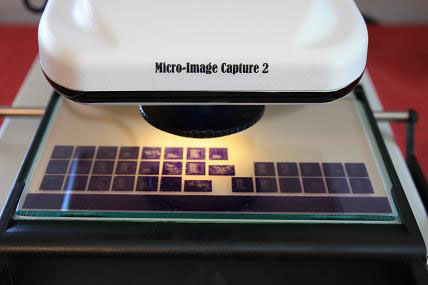I'm a first time poster and more into genealogy than photography but I am enjoying this .
I spend more than my fair time studying microfiche in my pursuit of genealogy records and recently I wanted to start copying them into my computer. After reading many websites I made up a reversed 60mm macro lens rig with linked together extension tubes and bellows off ebay . For the time being I have borrowed a friends camera to see if it works before I go buy an expensive camera setup

This seems to work quite well but I am yet to mate it to a copy stand.
But after this idea I tried to think of easier ways of doing it and more importantly more portable .
Another idea was to make a light box type unit where I used an old microfiche machine to project an image against a opaque sheet and take a photo from the other side . This would work but Im thinking the image would be degraded by the opaque sheet and the set up would be large and take time to setup and adjust. Like this I mocked up below.

What I would like to do is hook up a point and shoot camera type camera to a lens out of a old microfiche machine . I just played around with a lens and holding to against a digital camera lens I managed this.

Not bad for just hand holding I think :-)
I'm just wondering if it is possible to make a setup like this and what I need to be reading up on to make it possible . Once it is setup I can control light and distance easy and it would be portable .
Also what settings I would use on the camera and if there is software to so I could connect the camera to the computer.
I know I'm asking a lot but if someone could shove me in the right direction it would be great :-)
Thanks
Paul




